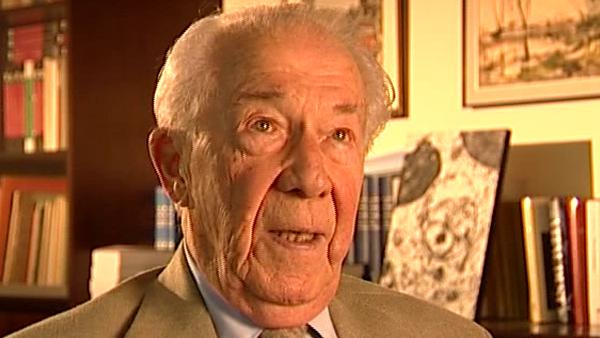NEXT STORY

Thierry Boon and the Ludwig Institute for Cancer Research
RELATED STORIES

NEXT STORY

Thierry Boon and the Ludwig Institute for Cancer Research
RELATED STORIES


|
Views | Duration | |
|---|---|---|---|
| 61. Learning I'd won the Nobel Prize | 241 | 03:41 | |
| 62. The 'fallout' of winning the Nobel Prize | 261 | 05:58 | |
| 63. The purpose of science | 275 | 03:28 | |
| 64. The importance of pure research | 153 | 03:15 | |
| 65. The division of the Catholic University of Louvain | 118 | 03:55 | |
| 66. Louvain-la-Neuve | 98 | 02:45 | |
| 67. The International Institute of Cellular and Molecular Pathology | 127 | 04:46 | |
| 68. Collaboration within the ICP | 84 | 03:29 | |
| 69. Expanding and funding the ICP | 67 | 03:40 | |
| 70. Thierry Boon and the Ludwig Institute for Cancer Research | 134 | 05:35 |


As I said, we had only four groups all coming from Louvain to start this but I felt we needed... we needed more; we needed more disciplines, we needed more people, we needed a less exclusively Louvain membership. And so I wanted it to be international, national, and so I made a deal with the university and said, 'Well, we want to be together on this new campus, this new medical campus, in the same building, but in addition we would like you to build a building that's twice the size that is needed, and if you just build... build the bricks and mortars of that building, we will find the money to finish off the labs, equip the labs, we will find the people to work in them on an international basis and with as main criteria excellence, quality... not necessarily field, but quality.' That's another point I learnt from Rockefeller. 'And we'll find the money.' And that was a very rash promise but I was very fortunate in fairly rapidly finding means so that the institute could be completed and laboratories occupied by new... by new teams. The institute was opened officially by Prince Albert – now King Albert II – I forget the exact date, but was in April 1975. But obviously it had been built before that, or at least part of it had been built and completed and some of the labs were already occupied; my own lab was already occupied at that time. Now, April 1975: that's five months after I went to Stockholm to collect my Nobel Prize, so this was really a very fortunate coincidence because a Nobel was obviously a good argument and a good excuse to try and get some money out of the Belgian government. It didn't last very long, but at least I was able to get enough to finish the... the institute and so that was extremely useful, and then another thing happened that was very fortunate. By some happy coincidence – maybe due to the Nobel Prize, I don't know – I was asked to act as an advisor to a newly created research organisation called the Ludwig Institute for Cancer Research.
Belgian biochemist Christian de Duve (1917-2013) was best known for his work on understanding and categorising subcellular organelles. He won the Nobel Prize in Physiology or Medicine in 1974 for his joint discovery of lysosomes, the subcellular organelles that digest macromolecules and deal with ingested bacteria.
Title: Expanding and funding the ICP
Listeners: Peter Newmark
Peter Newmark has recently retired as Editorial Director of BioMed Central Ltd, the Open Access journal publisher. He obtained a D. Phil. from Oxford University and was originally a research biochemist at St Bartholomew's Hospital Medical School in London, but left research to become Biology Editor and then Deputy Editor of the journal Nature. He then became Managing Director of Current Biology Ltd, where he started a series of Current Opinion journals, and was founding Editor of the journal Current Biology. Subsequently he was Editorial Director for Elsevier Science London, before joining BioMed Central Ltd.
Tags: International Institute of Cellular and Molecular Pathology, University of Louvain, April 1975
Duration: 3 minutes, 40 seconds
Date story recorded: September 2005
Date story went live: 24 January 2008